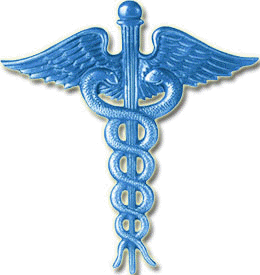Medico chirurgo - Specialista in Urologia e Oncologia.
Trattamento Ultrasuoni Focalizzati (HIFU)
![]() Tumore della prostata ed HIFU (High Intensity Focused Ultrasound)
Tumore della prostata ed HIFU (High Intensity Focused Ultrasound)
Ogni anno nel mondo vengono diagnosticati circa 500000 nuovi casi di
tumore prostatico.
L’HIFU (High intensity Focused Ultrasound) rappresenta un
trattamento minimamente invasivo del tumore prostatico tramite
ultrasuoni focalizzati ad alta intensità, ed è indicato soprattutto
per pazienti non chirurgici affetti da tumore prostatico
localizzato.
![]()
Video
Ablatherm 3D
![]() Diapositive
HIFU
Diapositive
HIFU
![]() Approfondimento
Approfondimento
![]()
![]() Ablatherm 3D
Ablatherm 3D
![]() Trattamento HIFU Centro di
Trattamento HIFU Centro di
![]() Esperienza Centro HIFU
Esperienza Centro HIFU
Video in formato Media Player Torino "Molinette" 2001/2006 Ablatherm Molinette di Torino
------------------------------------------------------------------------------------------------------------------------------------
![]() Il mio cancro alla prostata CURATO IN DUE GIORNI, più in fretta di
un'influenza.
Il mio cancro alla prostata CURATO IN DUE GIORNI, più in fretta di
un'influenza.
Voglio raccontarvi come ho curato un carcinoma
maligno alla prostata in due giorni. Ne1 2008, alla fine dell'estate
faccio I'esame del Psa. II valore riscontrato supera il massimo
accettabile. Cosi il medico mi consiglia una biopsia prostatica,
dalla quale si evince che ho un carcinoma maligno sul 50% dei
campioni prelevati. La notizia arriva come un pugno nello stomaco.
![]()
---------------------------------------------------------------------------------------------------
![]() Opuscolo informativo HIFU
Opuscolo informativo HIFU
Vi è appena stato diagnosticato un cancro della prostata.
Fra le varie opzioni terapeutiche il vostro urologo ha suggerito un
trattamento che utilizza Ultrasuoni Focalizzati di Alta Intensità
(H.I.F.U. = High Intensitive Focused Ultrasound).
Questo trattamento ha come obiettivo la distruzione del cancro.
Questo opuscolo contiene informazioni riguardanti il cancro della
prostata, la sua diagnosi e le varie opzioni terapeutiche per
lei
disponibili. Lei e la sua famiglia avrete una migliore comprensione
della malattia e del perché il vostro urologo suggerisce il
trattamento HIFU.
![]()
--------------------------------------------------------------------------------------------------------------------------------------
![]() Multicentric Oncologic Outcomes of High-Intensity Focused
Ultrasound for Localized Prostate Cancer in 803 Patients
Multicentric Oncologic Outcomes of High-Intensity Focused
Ultrasound for Localized Prostate Cancer in 803 Patients
Background: High-intensity focused ultrasound(HIFU) is an emerging
treatment for select patients with localized prostate cancer (PCa).
Objectives: To report the oncologic out come of HIFU as a primary
care option for localized prostate cancer from a multicenter
database. Design, setting, and participants: Patients with localized
PCa treated with curative intent and presenting at least a2-yr
follow-up from February 1993 were considered in this study.
Previously irradiated patients were excluded from this analysis. In
case of any residual or recurrent PCa, patients were systematically
offered a second session. Kaplan-Meier analysis was performed to
determine disease-free serviva rates (DFSR). Measurements:
Prostate-specific antigen (PSA), clinical stage, and pathologic
result swere measured pre- and post-HIFU. Results and limitations: A
total of8 03patients froms ixurologic departments met the inclusion
criteria. Stratification according to d’Amico’s risk group was low,
intermediate, and high in 40.2%, 46.3%, and13.5% of patients,
respectively. Mean follow-up was 42
_ 33 mo. Mean PSA nadir was1.0
_ 2.8 ng/ml with 54.3% reaching a nadir of
_0.3 ng/ml. Control biopsies were negative in 85% of cases.
The overall and cancer-specific serviva rates at 8yr were 89% and
99%, respectively. The metastasis-free serviva rate at 8 yr was 97%.
Initial PSA value and Gleason score value significantly influence
the DFSR. The 5- and 7- yr biochemical-free serviva rates (Phoenix
criteria) were 83–75%, 72–63%, and68–62% ( p = 0.03) and the
additional treatment-free survival rates were 84–79%, 68–61%,and
52–54% ( p < 0.001) for low-, intermediate-, and high- risk
patients, respectively. PSA nadir was a major predictive factor for
HIFU success: negative biopsies, stable PSA,and no additional
therapy. Conclusions: Local control and DFSR achieved with HIFU were
similar to those expected with conformal external-beam radiation
therapy (EBRT). The excellent cancer-specific serviva rate is also
explained by the possibilità to repeat HIFU and use salvage EBRT.



